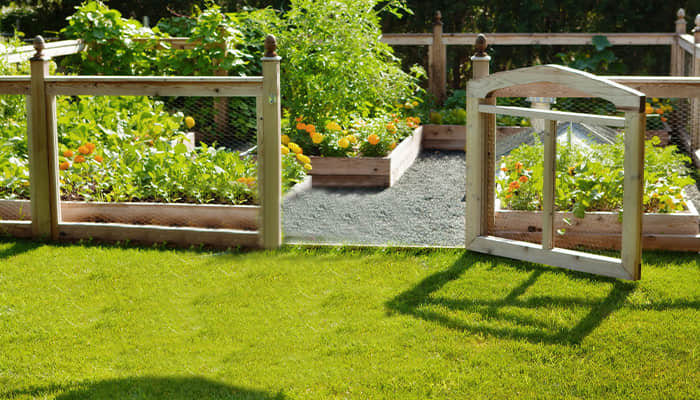Embark on Green Adventures: 7 Essential Tips for Launching Your First Vegetable Garden

Whether you’re a gardening newbie or returning to a cherished hobby, the world is brimming with resources on how to cultivate your own oasis. From extensive libraries to expert-led courses, like those at the New England Botanic Garden at Tower Hill, there’s a wealth of information waiting for you. Tower Hill boasts an incredible Vegetable Garden, a source of inspiration for your future visits.
But what if you’re after the nitty-gritty, the fundamental steps for growing plants you can feast on in just a few months? You’re in the right spot. Having delved into the world of gardening on my family homestead, learning through trial and error, here are seven quick and practical tips to maximize your chances of success.
#1. Sunshine Select: Optimize Your Garden’s Growth Potential
When choosing the perfect spot for your garden, prioritize sunlight—aim for the sunniest location, even if it means placing it prominently in the front yard. Many beginners face challenges by hiding their garden away in a distant, shady corner of the backyard. Keep in mind that most annual vegetables crave a minimum of eight hours of full sun daily. To ensure your chosen spot meets this criterion, try this simple trick: place a patio chair in the desired location and observe it throughout the day. This will help you determine if the area receives sufficient sunlight or if it’s shaded for too long.

#2. Crafting Your Growing Haven: Building the Perfect Garden Space
Constructing your garden is a crucial step, whether it’s a compact porch container or a spacious 4×8 raised bed. Opt for a raised bed that’s 6 to 10 inches tall, bordered by rocks, bricks, or untreated wood. While plants don’t necessarily need raised edges, they make it simpler for new gardeners to delineate their growing space. The walls also act as a protective barrier, preventing pets and kids from accidentally compacting the soil or trampling the plants. Additionally, they serve as a defense against invading weeds. Bonus: it’s a back-friendly option!

Here’s a game-changer: corner bricks that make drills and nails obsolete. Better yet, if your lumber supplier cuts the wood for you, you won’t even need a saw. It’s a straightforward, tool-free setup that simplifies the garden bed construction process. Gardening made easy!
#3. Nutrient Boost: Filling Your Raised Bed for Lush Growth
For a thriving garden, load your raised bed with soil, and my personal favorite is organic compost—it’s like a VIP ticket for speedy, robust plant growth. If convenience is your game, many garden centers now offer bags of raised bed soil that work wonders too. Once the soil is in, use a rake to even it out, but resist the urge to compact it—plants love their space to let their roots roam freely. No need to fret about making your bed too deep; most veggies don’t send their roots deeper than six inches. As for those critters, I’ve found they’re crafty climbers, so skip the bottom barrier and let your plants enjoy the view from above!

#4. May to June Joy: Planting the Seedlings for Your Summer Bounty
As the end of May or the start of June rolls around (especially if you’re in a growing zone akin to the New England Botanic Garden at Tower Hill), it’s time to bring in some seedlings. Whether you’ve nurtured them from seeds or snagged them from your local garden center, these green gems are ready to find their home in your garden bed. For a hassle-free start, go for summer squash, zucchini, cherry tomatoes, bush beans, Swiss chard, and kale—they’re like the champions of low-maintenance growth. If you’re up for a bit more challenge, try your hand at arugula, carrots, radishes, peppers, eggplant, lettuce, watermelon, and squash. But, fair warning, broccoli and spinach are my tricky-to-grow picks—I’ve yet to crack their secrets!

#5. Hydration Harmony: Mastering the Art of Watering Your Garden
When it comes to watering, find the sweet spot between too much and too little. The prime watering time? Early in the morning, as nighttime watering can invite pests and diseases. Direct your water to the soil, not the leaves—damp leaves are a welcome mat for diseases and even sunburn. Aim for a deep watering; you want that liquid goodness sinking down into the soil. A pro tip: poke your finger into the soil, and if only the surface dirt is wet, it’s time to hydrate a bit more. And for precision watering, a watering wand is your garden’s best friend, ensuring every drop lands right where it’s needed.

#6. Guardian Mulch: Shielding Your Garden with Natural Armor
Mulching your garden is a game-changer! It’s the ultimate weed warrior and moisture maestro. Personally, I swear by shredded leaves from the previous fall, spreading a comfy layer across my beds like a cozy blanket. Over at the New England Botanic Garden at Tower Hill, they work wonders with grass clippings as mulch in their Vegetable Garden. When leaves and grass are elusive, I turn to a bale of straw (not hay, though—seeds included) from a local farm or a garden center. The key is avoiding bare soil; your growing food deserves a well-dressed garden!

#7 Let Your Garden Go Organic
It’s a joy for you, a delight for your plants, and a boon for the ecosystem. Happy vibes all around!

